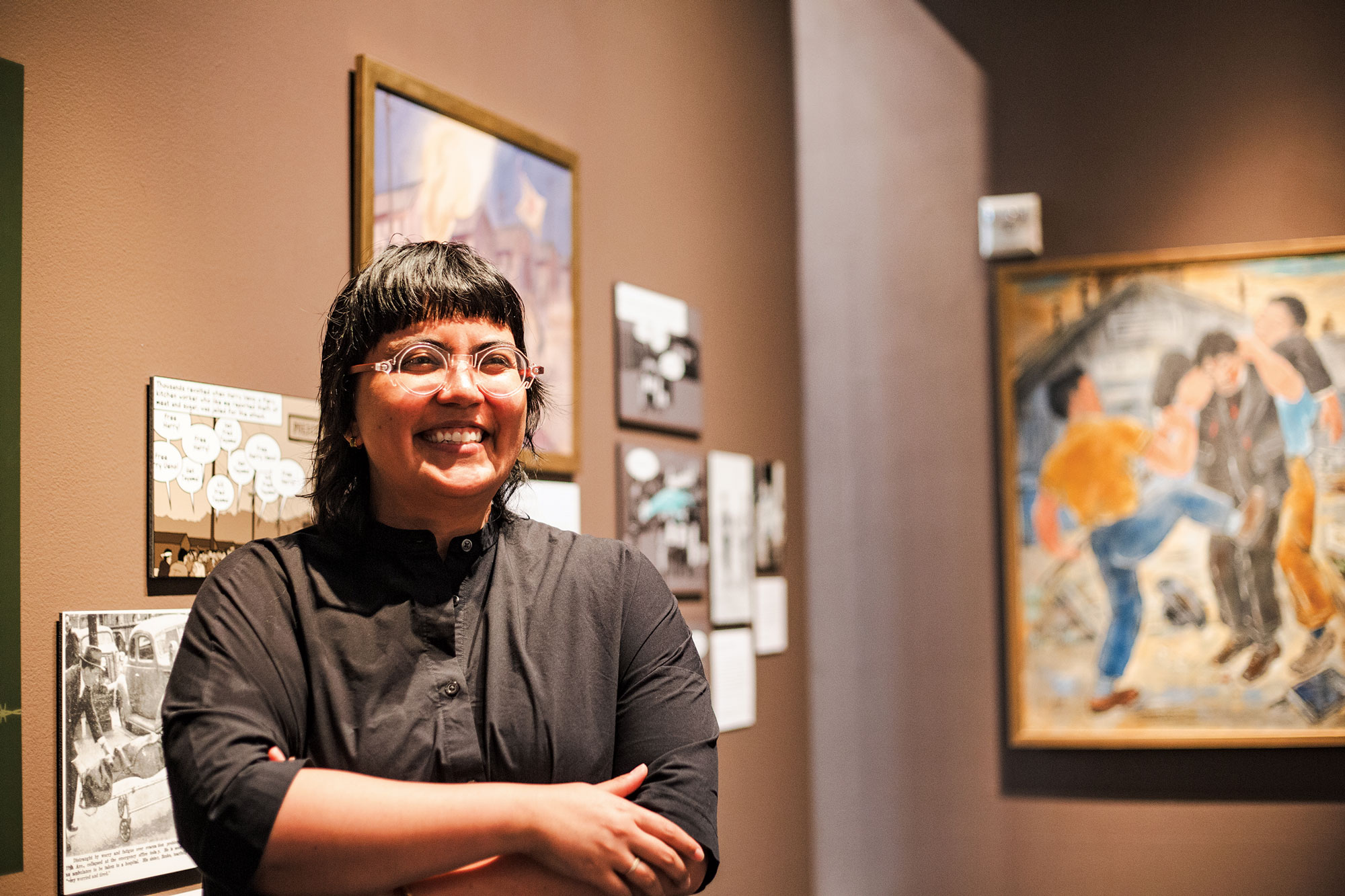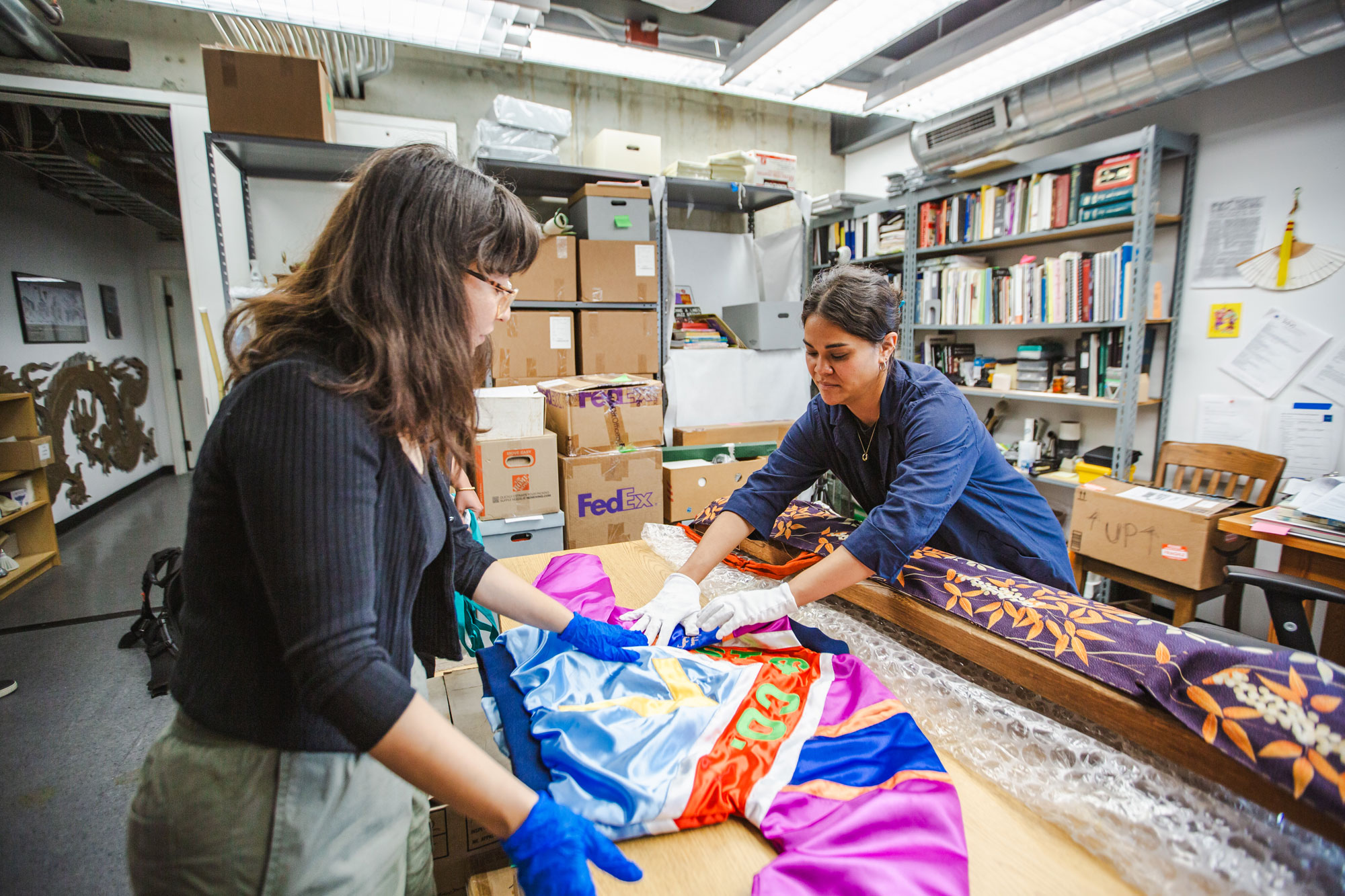Stories to tell Stories to tell Stories to tell
The Wing Luke Museum is nationally recognized and community based
By Hannelore Sudermann | Photos by April Hong | Viewpoint Magazine

This summer, deep in the archives of the Wing Luke Museum, Polly Yorioka chanced upon an unexpected treasure. It was a nearly century-old photo of her great-grandmother playing a traditional Japanese string instrument called the koto. Yorioka, a UW student working on her master’s in museology, was in the midst of an internship helping develop the Wing’s latest exhibit, “Sound Check! The Music We Make.” The large-scale exhibition of sound, image, artifact and story follows the music of Asian American, Native Hawaiian and Pacific Islander communities--music they created, enjoyed and that served as the background to their lives. During the weeks curating the materials, Yorioka worked alongside Jessica Rubenacker, ’09, exploring the museum’s own archives and collecting and preparing artifacts from individuals in the community who had fascinating music stories to tell. The curators were delighted to bring in a colorful silk jacket from singer-songwrier Roger Rigor, of VST & Company, one of the Philippines’ most popular disco bands of the late 1970s and early ’80s. Rigor later moved to Seattle and became a public school teacher.
There are also guitars from well-known local artists like Kim Thayil, the lead guitarist of Seattle-based band Soundgarden. Thayil, who is of Indian ancestry, and bandmate Hiro Yamamoto, of Japanese descent, were founding members of a band that helped take the Seattle sound to the world. “A lot of people don’t think of Soundgarden being two-thirds Asian American, but it was,” says Rubenacker. The museum’s exhibit director, Rubenacker also teaches as guest faculty in the UW’s museology program. That was where she first met Yorioka, who still can’t believe her luck in landing the Wing Luke internship. “This is the first exhibit I’ve worked on,” Yorioka says. “It’s a new adventure. I’m going from learning the theories to actually getting to do it.” Yorioka finds it especially poingant to find her own family, which had longstanding ties to Seattle’s Chinatown-International District, in the exhibit. Yorioka does her work in a cozy archive space past a warren of offices and meeting rooms that make up the upper floors of the historic East Kong Yick Building. In 1910, 170 Chinese residents in Seattle pooled their money to develop the four-story red brick building, and its twin, the West Kong Yick Building, with storefronts below and single-occupant hotel rooms used by Chinese, Japanese and Filipino traveling workers above.
- At the Topaz Concentration Camp in Delta, UT, 63-year-old 63-year-old James Hatsuaki Wakasa was murdered by a camp guard while walking his dog. This exhibit encourages visitors to create paper flowers in memoriam.
- Polly Yorioka, a graduate student in museology, holds a photograph of her great-grandmother she discovered in the Wing Luke collections.
- Wing Luke staff examines a jcaket from singer-songwriter Roger Rigor of VST & Company, a popular Filipino disco band.
Click or tap photos to enlarge and read captions.
In 2007, the museum’s executive director, UW alum Ron Chew, led the acquisition of the structure, renovating and preserving it for future generations. During Chew’s tenure at the museum, he brought the Wing to national recognition for centering individuals’ stories in the exhibit narratives and expanding community-based exhibit development. Because of the Wing’s commitment to education and public service, in 2021 it became the first Smithsonian Institution-affiliated museum in the Northwest, allowing it to bring to Seattle the expertise, collections and programming of the national museum.
But much of the “Sound Check!” exhibit is built from local resources. It includes artifacts on loan from MoPOP and photos from Densho, the Seattle-based nonprofit that preserves documents and testimonies of Japanese Americans. The radio station KEXP (which was formerly UW’s student-run station, KCMU) has loaned equipment for a DJ booth. The station will also develop broadcast programming that relates to “Sound Check!” over the 12-month run of the exhibition.
It is a feast for the ears and eyes. Visitors can learn more about Filipino music tradition and ponder endearing local photos—like one of the 1974 Franklin High School JazzLab. The adolescents, dressed in wide-collared shirts, were an awkward bunch, but under the guidance of conductor Charles Chinn, they created a fierce sound. Several went on to be professional musicians—including one Kenneth Gorlick, aka Kenny G.
From world famous to deeply local, from Chinese opera to modern hip-hop, “We are sharing all sorts of stories from historic to contemporary,” says Rubenacker. There’s kabuki, concerts and variety shows at the Nippon Kan theater and the more recent beats of the Blue Scholars, the hip hop duo of George Quibuyen and Saba Mohajerjasbi, who met as UW students in 1999. Quibuyen also once worked at the Wing Luke.
While the exhibit might offer a nostalgic tour for certain community members, it’s filled with fresh stories that will intrigue “the broad audience of folks in Seattle,” says Rubenacker. “This topic is so universal. Music touches all of us.”


